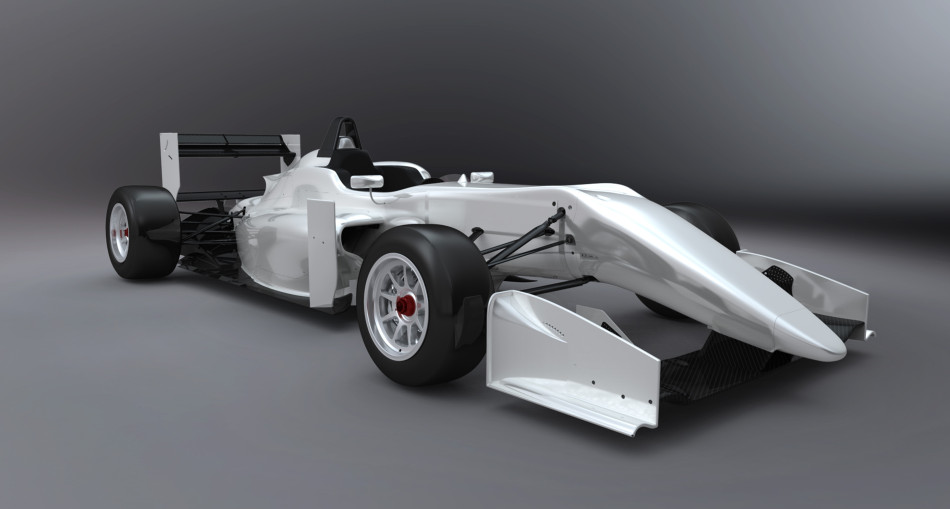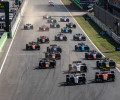F3 - FIA Formula 3 European Championship offers enhanced package for 2017
Important step taken to reduce the costs of competing, while at the same time establishing performance equity

The FIA together with the promoter of the series, Formel 3 Vermarktungs GmbH, are continuously working on enhancing the value of the championship for drivers and teams. With the changes to the 2017 Technical Regulations, an important step has already been taken to reduce the costs of competing, while at the same time establishing performance equity. The Sporting Regulations have also been carefully examined and the following changes have been implemented for the upcoming season.
Eligible drivers
To highlight the character of FIA F3 European Championship being a young drivers’ series an age limit of 25 years has been imposed for drivers intending to participate in the championship in 2017. The maximum number of complete seasons the drivers are permitted to compete in the FIA F3 European Championship has been increased from three to four seasons, with at least two consecutive seasons being considered ideal. The obligation of taking part in a FIA driver training course has proven successful and will remain in place. The measure was introduced in 2016 to ensure that drivers are prepared for the upcoming season and have fundamental knowledge of what to expect when joining the championship – especially coming from FIA Formula 4.
Prize money and reduced entry fees
As already communicated the FIA has introduced a prize money fund for rookie drivers for 2016. It has now been confirmed that the incentive will remain in place in 2017 and will even be increased and expanded to also include the team and driver championships this year.
For 2017 the entry fee and also the late entry fee for teams have been reduced. For the entry fee an amount of 2,000€ multiplied by the number of events on the calendar (up to a maximum of 18,000€) has been agreed, while the late entry fee now is set at 3,000€ per driver, car and event taken part in. The submission period of the final entry application has been extended and is possible from the 16th of January to one week before the first official test in 2017, provided a pro-forma entry application has been submitted in December last year. The maximum number of cars a competitor may enter for the championship remains at four.
Testing
As in previous years the 2017 Sporting Regulations grant each driver twelve test days, consisting of six official and six private days. However, the rules on private testing have been tightened. Since December 18th 2016 no private testing is allowed in any type of car on any circuit being part of the Championship calendar. This means that an unrivalled amount of mileage per season – one of the main characteristics of F3 – will be maintained while at the same time costs are kept on an affordable level and performance advantages by testing a non F3 car on a championship circuit are eliminated.
Engine
The multi engine approach is an integral part of Formula 3’s DNA and will also remain in place in the upcoming season, thus allowing multiple engine manufacturers and tuners to supply the teams.
Last year the World Motor Sport Council has voted to extend the homologation period for the F3 engine by two years until the end of December 2019 in order to align it with the chassis homologation period. This will result in cost reduction as the engines will be used without further development for two more years, while the alignment of the chassis and engine homologation period assures further costs savings.
Addressing the current financial landscape and allowing for a predictable budget, the running costs for one engine through a calendar year as per regulation do not exceed 65,000€. Items like service costs have been included in order to avoid unregulated or hidden costs and allow for more transparency.
The rules on penalties for engine replacements have been reviewed for 2017. While engine changes will still be harshly penalised if considered out of performance reasons, for replacements due to mechanical or electrical failures following the judgement of the FIA Technical Delegate a one-time ten grid place penalty will be imposed on the next race the driver will compete in (instead of facing the same penalty for three races as was the rule in the previous seasons). If the engine change becomes necessary following an accident on track and the accident is judged to have been caused by a third party, no penalty will be incurred.
Staff and truck limitation
For the upcoming season a staff limit for race weekends has be introduced. The respective amount of operational team members has been established in close cooperation with the competitors and should guarantee better cost control and sporting fairness. Furthermore, a limitation on the number of trucks and trailer units being allowed in the paddock per team has been added to the 2017 Sporting Regulations. This should prevent teams on spending budget on unnecessary paddock structures and establish a reasonable and even level for all teams.
Data sharing
Teams have agreed to share information on throttle, brake and speed after the first qualifying session. The respective data from the fastest lap of the fastest driver of each of the two fastest teams will be made available to all competitors. This should help smaller, less experienced teams and generate closer competition among the drivers.
Aerodynamics
The 2017 Technical Regulations already include the rule that from the coming season any bodywork visible from the outside of the car must be used exactly as designed by the rolling chassis manufacturer. To comply with the new rule no changes on existing parts can be made and no extra parts can be added to the car to create an aerodynamic advantage, hence costly wind tunnel testing will become unnecessary. The 2017 Sporting Regulations are even more explicit and ban any wind tunnel testing altogether. Instead, the rolling chassis manufacturers are required to supply the aerodynamic data of the rolling chassis used by the competitor to the respective team. This measure eliminates the costly wind tunnel tests, but at the same time guarantees that teams have appropriate aerodynamic data to work with.
 The 2017 FIA Formula 3 European Championship Sporting and Technical Regulations can be downloaded via the following link: www.fia.com/regulation/category/106
The 2017 FIA Formula 3 European Championship Sporting and Technical Regulations can be downloaded via the following link: www.fia.com/regulation/category/106

 Facebook
Facebook Twitter
Twitter






